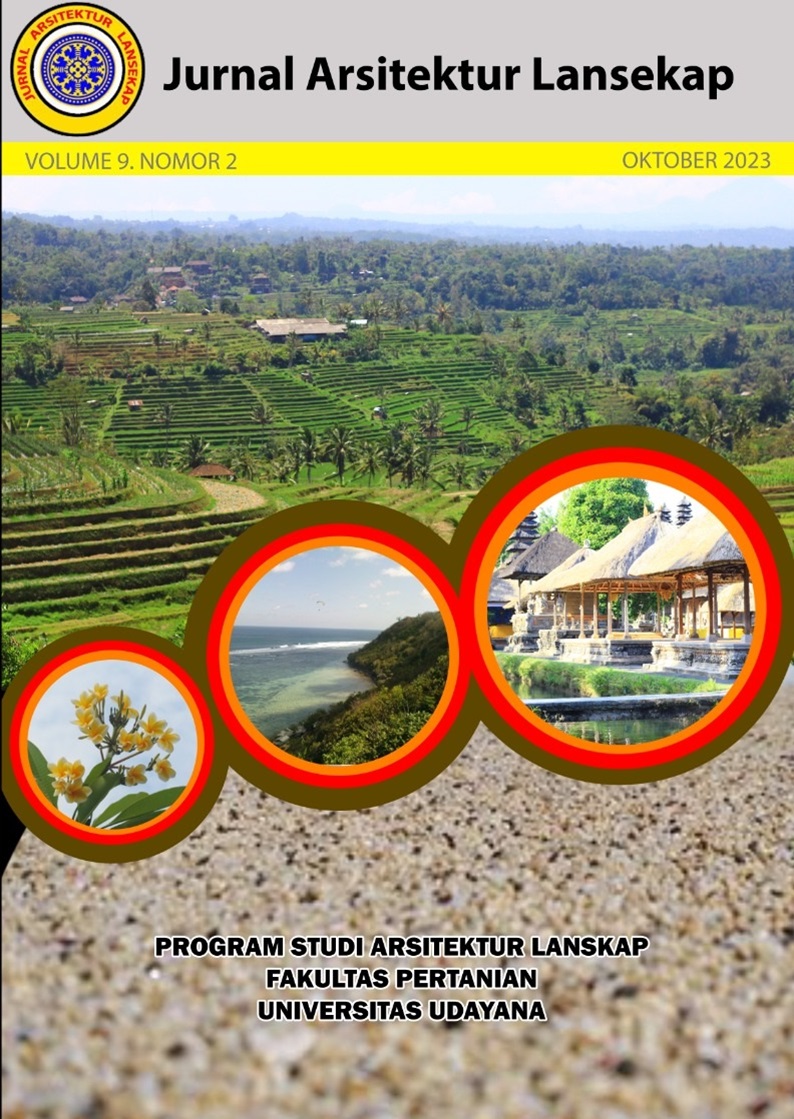Potensi Pengembangan Ekowisata Pada Kawasan Objek Wisata Alam Batu Jato Di Kecamatan Nanga Taman Kabupaten Sekadau
Abstract
The Potential of Developing Ecotourism in the Batu Jato Natural Tourism Area in the Nanga Taman District, Sekadau Regency. Batu Jato is one of the natural tourist destinations located in Pantok Village, Nanga Taman District, Sekadau Regency, West Kalimantan. Batu Jato has the potential of an area that is feasible to develop as an ecotourism area. The purpose of this study was to analyze the potential of the Batu Jato tourist attraction area to be developed as an ecotourism area. This research was conducted from June 2022 to September 2022 in the Batu Jato area. The method used in this research is the Purposive Sampling method. Based on the results of the research, the Jato stone tourism area has a variety of very interesting potentials, some of which are: beautiful landscapes, biological resources of flora and fauna, religious tourism sites, and community culture. Based on the results of the IKW calculation at each research station, the camping/outbound tourism category is included in the unsuitable category, while the sitting tour is included in the suitable category. The results of the DDK calculation at each station show that the maximum number of visitors is 253 people / day. The SWOT analysis diagram shows that internal and external factors are in Quadrant I, which creates a strategy that uses strengths to take advantage of existing opportunities.zzz
Downloads
References
Effendi, H. (2015). Telaah Kualitas Air (1st ed.). Kanisius.
Mukti, A., & Fukuh, R. (2022). INDEKS KESESUAIAN WISATA DAN DAYA DUKUNG KAWASAN WISATA WADUK GONDANG, KABUPATEN LAMONGAN (Tourism Suitability Index and Carrying Capacity of Gondang Reservoir Tourism Area, Lamongan Regency) Fuquh Rahmat Shaleh*, Norma Aprilia Fanni, Nuralim Pasisingi. Jurnal Agroqua, 20(1), 72–82.
https://doi.org/10.32663/ja.v%vi%i.2319
Rahayu, E. M., Triwanto, J., Chanan, M., & -, O. (2021). Analisis Faktor Jumlah Pengunjung Obyek Wisata Srambang Park Ngawi Jawa Timur. Jurnal Hutan Tropis, 9(1), 50. https://doi.org/10.20527/jht.v9i1.10468
Rangkuti, F. (2015). Analisis SWOT Teknik Membedah Kasus Bisnis (1st ed.). PT. Gramedia Pustaka Utama.
Rijal, S., Nasri, N., Ardiansyah, T., & A, C. (2020). Potensi Pengembangan Ekowisata Rumbia Kabupaten Jeneponto. Jurnal Hutan Dan Masyarakat, 12(1), 1. https://doi.org/10.24259/jhm.v12i1.6031
Saru, A. (2013). Mengungkap Potensi Emas Hijau di Wilayah Pesisir. Masagena Press Makassar.
Sastrayuda, G. (2013). Konsep Pengembangan Kawasa Ekowisata.
Trijoko. (2013). Flora Dan Fauna Kalimantan (2nd ed.). Fakultas Biologi UGM.
Widarti. (2013). Buku Pedoman Inventarisasi Jasa Lingkungan (D. PHKA (ed.); 1st ed.).
Yulianda, F. (2019). Ekowisata Perairan (B. Nugraha & M. Rizqydiani (eds.); 1st ed.). IPB Press.
Yulisa, E. N., Johan, Y., & Hartono, D. (2016). Analisis Kesesuaian Dan Daya Dukung Ekowisata Pantai Kategori Rekreasi Pantai Laguna Desa Merpas Kabupaten Kaur. Jurnal Enggano, 1(1), 97–111. https://doi.org/10.31186/jenggano.1.1.97-111

This work is licensed under a Creative Commons Attribution-ShareAlike 4.0 International License.
An author who publishes in the Jurnal Arsitektur Lansekap (JAL) agrees to the following terms:
- Author retains the copyright and grants the journal the right of first publication of the work simultaneously licensed under the Creative Commons Attribution-ShareAlike 4.0 License that allows others to share the work with an acknowledgement of the work's authorship and initial publication in this journal
- Author is able to enter into separate, additional contractual arrangements for the non-exclusive distribution of the journal's published version of the work (e.g., post it to an institutional repository or publish it in a book) with the acknowledgement of its initial publication in this journal.
- Author is permitted and encouraged to post his/her work online (e.g., in institutional repositories or on their website) prior to and during the submission process, as it can lead to productive exchanges, as well as earlier and greater citation of the published work (See The Effect of Open Access).
Read more about the Creative Commons Attribution-ShareAlike 4.0 Licence here: https://creativecommons.org/licenses/by-sa/4.0/.







